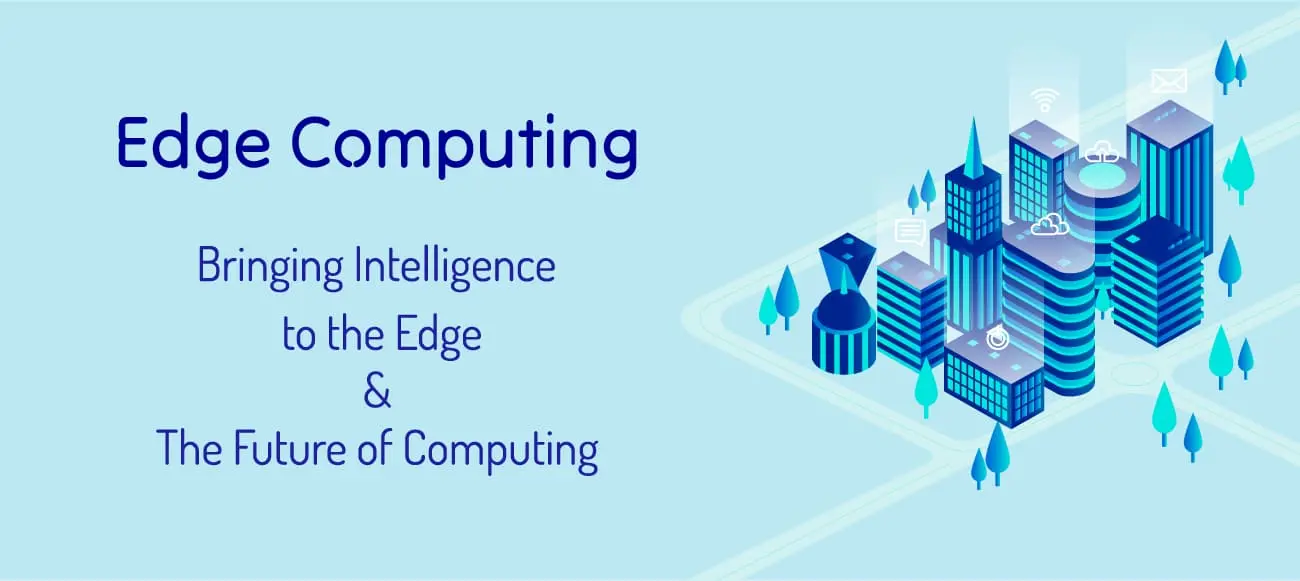
17 Aug Edge Computing: The Future of Real-Time Data Processing
Get ready to be wowed by the latest breakthrough in the field of computing – edge computing! This rapidly growing paradigm is set to revolutionize the future of technology. By using a distributed computing architecture, edge computing brings computing and data storage closer to the devices that generate and consume data, such as sensors, mobile devices, and IoT devices. This groundbreaking approach not only enables faster data processing but also reduces network latency, and boosts the overall efficiency of data-intensive applications. Unlike traditional cloud computing that relies on a centralized approach, edge computing brings computing resources closer to the data source. This helps minimize the latency and bandwidth required for data transfer, resulting in lightning-fast processing speeds that will leave you in awe!
In this blog, we will explore edge computing and its applications.
Edge computing is a decentralized model of computing where computation and data storage occur at the network edge, which can be at the device, gateway, or the nearest data center. In this model, the data is processed locally, near the source of the data, instead of being transmitted to a central server or cloud for processing. This approach reduces the latency and network bandwidth required for data transfer and improves the performance and efficiency of the system. Edge computing is becoming increasingly popular due to the rise of the Internet of Things (IoT) and the need for real-time processing and analysis of large amounts of data. The IoT generates vast amounts of data from sensors and devices, which can overwhelm traditional cloud computing systems. Edge computing provides a way to process this data closer to its source, reducing the load on the cloud and improving the speed and efficiency of the system.
One of the key advantages of edge computing is its ability to enable real-time data processing and decision-making. This is particularly important in applications such as autonomous vehicles, where milliseconds can mean the difference between life and death. With edge computing, the data is processed in real-time, allowing for immediate action to be taken. Edge computing also provides improved security and privacy for data processing. By processing data locally, the risk of data breaches and cyber attacks is reduced, as data is not transmitted over the network. Additionally, edge computing enables data encryption and other security measures to be implemented at the edge, providing an extra layer of protection.
How Does Edge Computing Work?
Edge computing is based on the concept of distributed computing, where multiple computing devices work together to perform a task. In the case of edge computing, these devices are located closer to the source of data generation, such as IoT devices, sensors, and mobile devices.
The architecture of edge computing can vary depending on the specific use case and requirements. In general, edge computing consists of three main layers: the edge devices, the edge network, and the edge data center.
The Edge Devices
Edge devices are the devices that generate and consume data, such as sensors, IoT devices, and mobile devices. These devices are equipped with processing and storage capabilities, enabling them to perform data processing tasks locally.
The Edge Network/Gateway
The edge network connects the edge devices and the edge data center, enabling data transmission and communication between the devices. The edge network can be a wireless or wired network, depending on the specific use case. The edge devices are responsible for capturing the data and sending it to the edge gateways for processing. This data can be in various formats, such as text, images, or video, and may require preprocessing before being sent to the edge gateways. The edge gateways are responsible for aggregating the data from the edge devices and processing it locally. This processing can include data filtering, analysis, and transformation. The edge gateways may also perform data compression and encryption to reduce the size of the data and improve security.
The Edge Data Center
The edge data center is where data processing and storage take place. It is a distributed computing infrastructure that can be located at the edge of the network or in a nearby data center. The edge data center is equipped with powerful computing resources and storage devices, enabling it to process and store large amounts of data. Once the data has been processed by the edge gateways, it can be sent to the data center for additional processing and storage. The data center provides additional computing resources and storage capacity for the edge devices and gateways. The data center may also perform advanced analytics, machine learning, and other processing tasks that require more computing power than is available at the edge.
Benefits of Edge Computing
Edge computing offers several benefits over traditional cloud computing, making it suitable for various industries and use cases. Here are some of the primary benefits of edge computing:
- Real-time Data Processing Made Possible: With the help of edge computing, real-time data processing is now achievable, which makes it an ideal choice for applications that require instant data processing like autonomous vehicles, industrial automation, and smart cities.
- Faster Data Processing: Edge computing minimizes network latency by handling data processing closer to the source, which results in quicker and more efficient data processing.
- Enhanced Security Measures: Edge computing strengthens security measures by keeping sensitive data close to the source of data generation, thereby decreasing the risk of data breaches and ensuring data privacy.
- Cost-Effective Solution: Edge computing offers a more cost-effective solution than traditional cloud computing by reducing the need for expensive data center infrastructure and bandwidth usage, making it a smart choice for companies looking to streamline their operations while minimizing costs.
Use Cases of Edge Computing
Edge computing has numerous applications in various industries, including healthcare, manufacturing, and transportation. In healthcare, edge computing can be used to monitor patient vital signs in real-time and alert medical personnel if there is a problem. In manufacturing, edge computing can be used to monitor production lines and optimize efficiency. In transportation, edge computing can be used to enable autonomous vehicles and improve traffic flow.
Edge computing can be applied to various industries and use cases, including:
- Industrial Automation: Edge computing can be used in industrial automation to enable real-time data processing and improve efficiency. For example, sensors on a manufacturing line can transmit data to edge devices for real-time analysis, enabling predictive maintenance and reducing downtime.
- Autonomous Vehicles: Edge computing can be used in autonomous vehicles to enable real-time data processing and improve safety. For example, sensors on a self-driving car can transmit data to edge devices for real-time analysis, enabling the car to make real-time decisions based on the data.
- Smart Cities: Edge computing can be used in smart cities to enable real-time data processing and improve efficiency. For example, cameras and sensors installed at intersections, parking lots, and highways can help to optimize traffic flow, reduce congestion, and improve safety.
In short, the possibilities with edge computing are endless, making it a game-changer in modern-day computing.
In conclusion, edge computing is a promising technology that is revolutionizing the way we process and analyze data. By bringing computation and data storage closer to the edge of the network, edge computing enables real-time processing and analysis, reducing latency, improving security, and increasing efficiency. As the number of connected devices continues to grow, edge computing will become increasingly important for managing the massive amounts of data generated by the Internet of Things (IoT). However, there are also challenges to implementing edge computing, such as standardization, security, and data privacy concerns, that must be addressed. Despite these challenges, the potential benefits of edge computing make it a technology to watch in the coming years.

Sorry, the comment form is closed at this time.